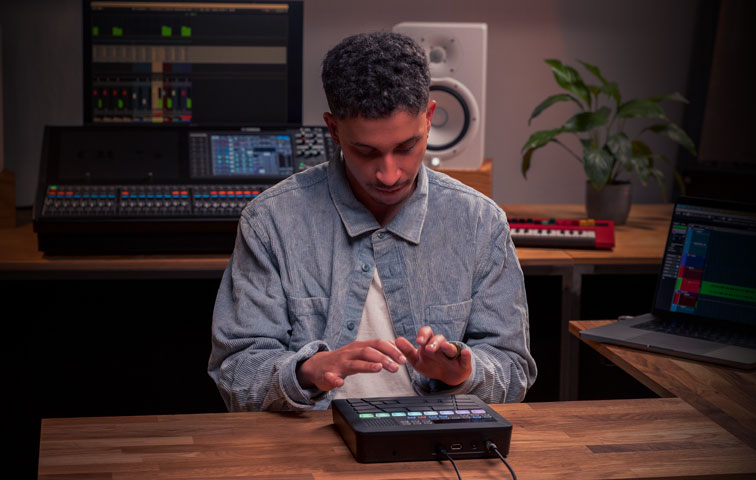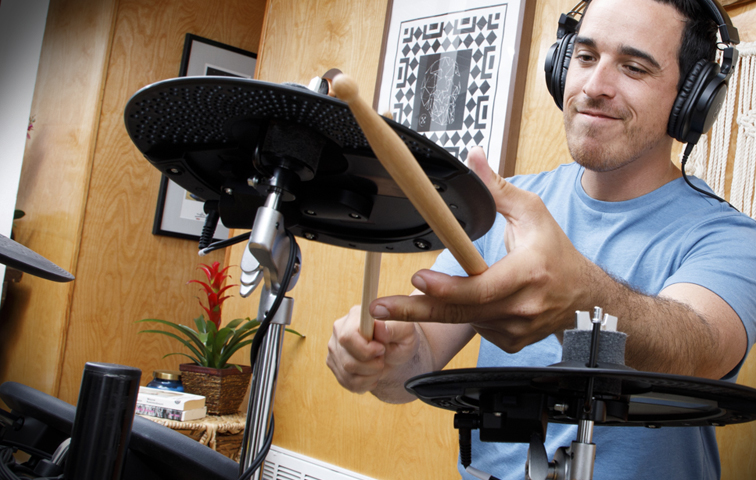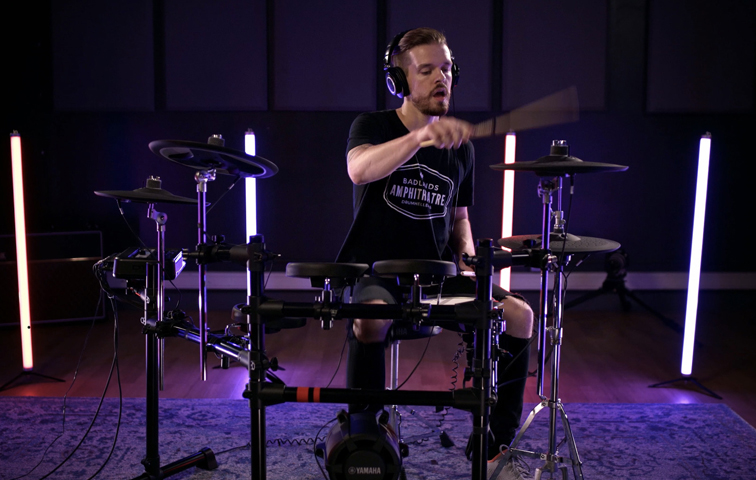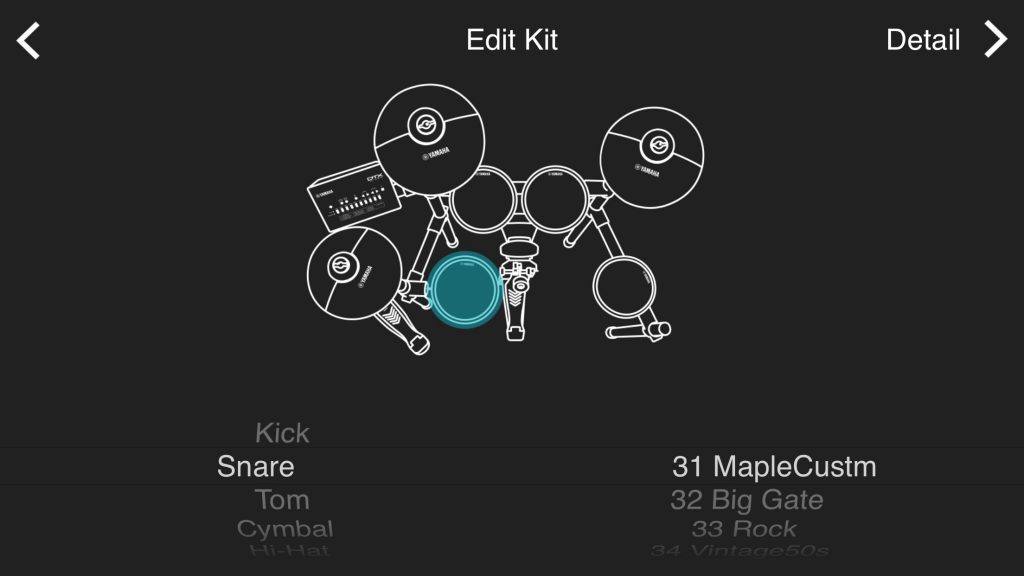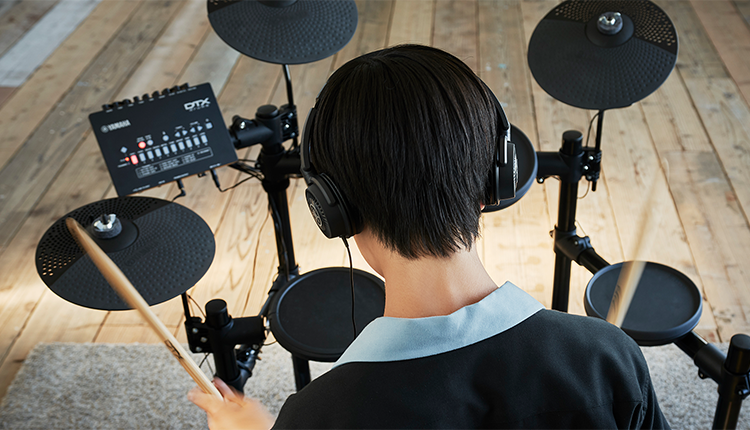How to Practice Drums Without Disturbing the Neighbors
How to rig for silent running.
Drummers have to drum. But unless you have access to a rehearsal studio or you’re regularly gigging, it can be challenging to find ways to practice without disturbing the neighbors.
“Quiet drumming” might seem like a contradiction in terms, but there are actually several options for getting the volume down while keeping your chops up. Here are a few of them.
1. Use Practice Pads
The age-old method for quiet practice is the practice pad, which was initially developed for working on rudiments (though not necessarily beats and fills). Multi-pad kits are also available, making it possible to work on coordination and independence.
Practice pads offer a lot of advantages. They’re lightweight, easy to move and relatively inexpensive. They can be used anywhere in your home — you even take them outside and work on your flams while you work on your tan. A practice pad brings you back to the basics, forcing you to focus your concentration on a single surface. You can also easily hear a metronome while playing on a pad, which helps prevent sloppy habits and improves stick control.
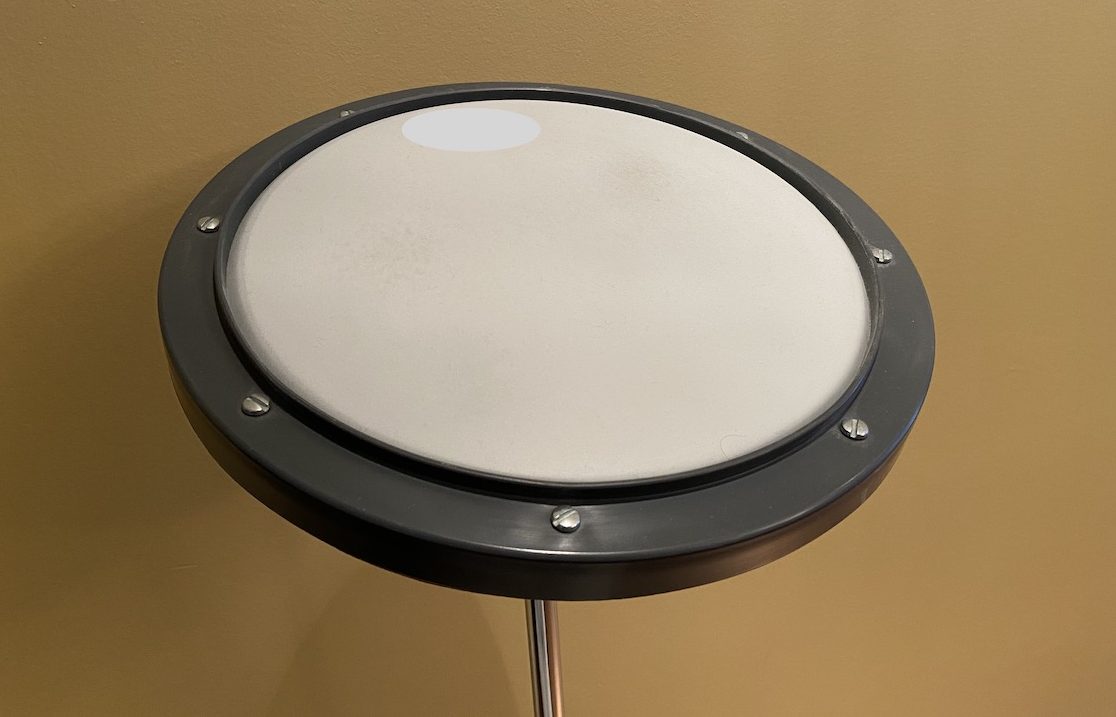
Practice pads are available with a variety of playing surfaces, ranging from rubber to real drum heads, so try various options and see what feels best to you. (Bear in mind, however, that whichever one you choose, the rebound is likely to be stronger than that of an acoustic drum.) Pads designed for tabletop use are adequate, but to maintain your playing posture, a practice pad should be placed on a stand at the same height as your snare drum.
2. Muffle Your Drums
As long as there have been drums, there have been people trying to figure out how to make them quiet! Homemade remedies have included filling drum shells with packing peanuts or moving blankets, placing towels on top of heads or cymbals, and putting sheets between the bearing edges and the heads.
These days, there are more sophisticated ways to reduce the volume of acoustic drums. For example, rubber drum and cymbal mutes can easily be placed atop your existing kit and quickly removed when it’s gig time. A downside to playing on drum mutes, however, is that sticks don’t rebound the way they would if you were playing directly on the heads, so you’ll have to work a little harder than usual — which is also a good way to build up your drumming muscles.
Mesh heads can also drastically decrease the loudness of any acoustic drum set, though a big disadvantage is that you’ll have to change back to normal heads when it comes time for a gig — unless you have the luxury of owning separate kits for practice and gigging. Mesh heads can also feel somewhat springy under normal tension and don’t play well with brushes because the wires get caught in the weave … and when tensioned high enough to feel like traditional heads, they generally don’t sound all that great. That’s where triggers like the Yamaha DT Series come in handy. Simply attach them to drums with mesh heads and connect them to an electronic module like the Yamaha EAD10 in order to practice at a low volume while hearing realistic drum sounds in your headphones.
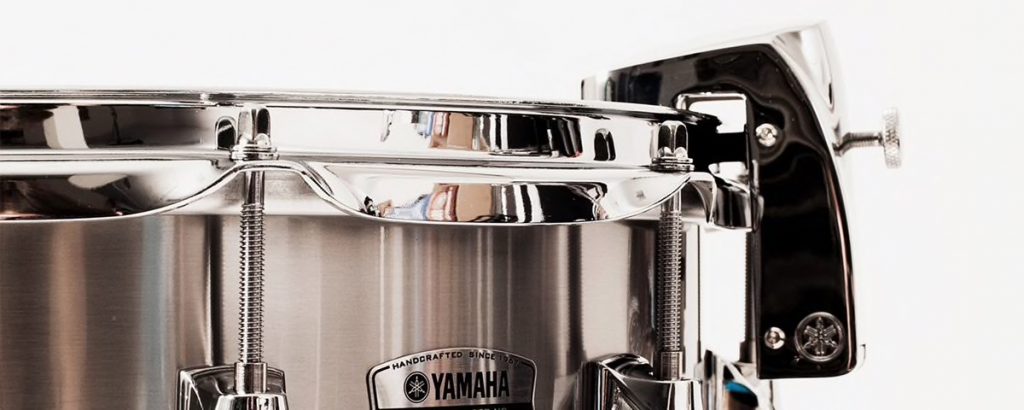
Complementing mesh heads are the new generation of “practice cymbals” (sometimes called “low volume” or “silent” cymbals.) Essentially lightweight cymbals that have been perforated with a large number of holes, they feel and sound very much like regular cymbals, but are not nearly as loud. Since the Yamaha EAD10 has a built-in stereo mic, you’ll be able to mix in the sound of these kinds of cymbals for a realistic practice experience at a low volume. Check out this video to see how it works:
Here’s another video that shows you how to use practice cymbals along with DT Series triggers and an EAD10 to build a quiet drum set.
3. Use Electronic Drum Kits
There’s no question that an electronic drum kit keeps noise levels down, and they also provide a wide range of different sounds and features. That means you can keep reinventing your kit over and over again while sharpening your skills at the same time. (For a good example, check out this video of the Yamaha DTX6 being put through its paces.
However, keep in mind that playing on an electronic pad with a hard rubber surface can actually produce enough noise to disturb your next-door neighbors. For that reason, you should look for electronic pads with soft rubber surfaces or synthetic heads (these are also easier on your elbows than hard surface pads!). The Yamaha DTX720K electronic drum kit utilizes advanced DTX-PADs for the snare and toms. These are exceptionally quiet, but at the same time offer playability similar to that of acoustic drums.
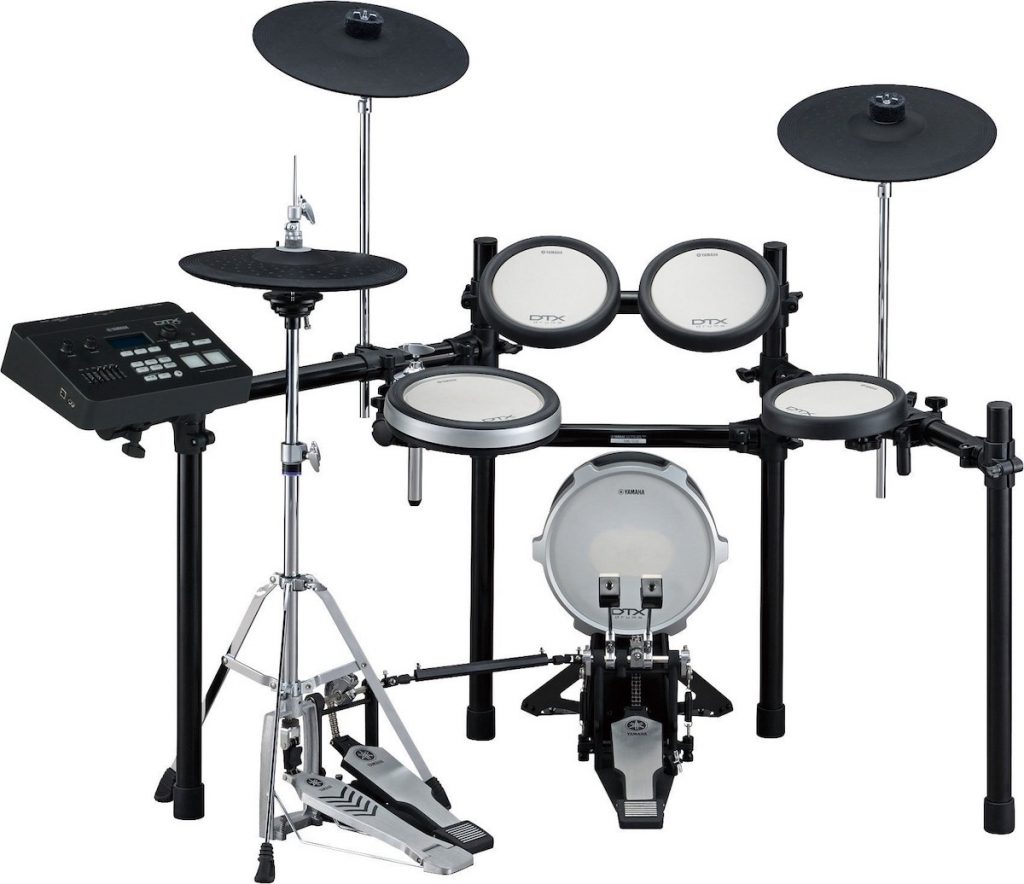
4. Soundproof Your Practice Space
Soundproofing your practice space is the most effective way to play acoustic drums without disturbing your neighbors, but it’s an expensive undertaking, and few rooms (if any) end up being truly soundproof. If you can use a part of your garage or basement for practice, that’s the best way to go because they’re usually constructed from concrete, which is a very effective material for isolating sound. These kinds of spaces also have the natural advantage of no neighbors underneath — important since the thumping generated by foot pedals can easily permeate through floors and ceilings. There are commercially available sound-deadening mats and platforms that address this problem, though these kinds of products can be pricey. If you’re on a tight budget, rubber floor tiles designed for home playrooms or workout rooms can work surprisingly well. As a bonus, they usually come as locking panels, so you can custom-create a platform in pretty much exactly the size needed to accommodate your drums.
If neither a garage nor a basement is an option, fear not: There are ways to prevent sound from leaking out of any room. Start by making sure that all windows and doors are thoroughly sealed using weather stripping or caulk — but understand that sound can escape through air vents as well as holes in walls, floors or ceilings, so make sure they’re sealed too. Isolation of hollow doors can be improved by adding a layer of plywood or medium-density fiberboard (“MDF”) to each side of the door. Heavy curtains and blankets can also significantly decrease the amount of noise leaking through windows or doorways. Placing old mattresses or couch cushions against walls can also help improve isolation (even at the tough-to-control low frequencies), though you should determine whether the possible health risks of doing so outweigh the acoustic benefits. One myth to avoid: Don’t tack empty egg cartons on the walls or door. They won’t make things soundproof. In fact, they’ll do little more than make your practice room smell like a dirty grocery store.
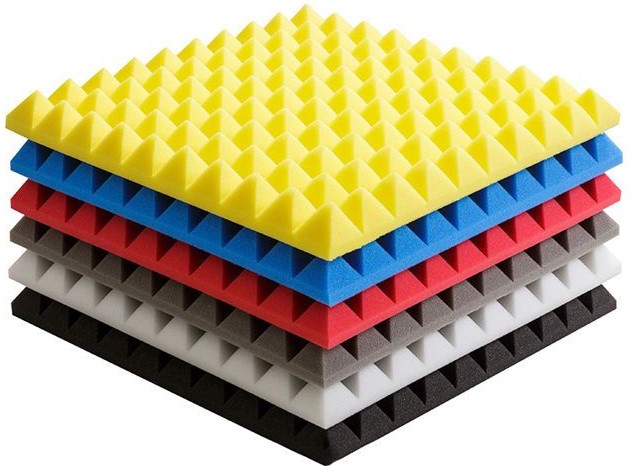
Bear in mind that, even if you’ve done a great job keeping sound from leaking out, the amount of sound bouncing around inside a room can be a real distraction, especially when playing a high-decibel instrument like acoustic drums. Fortunately, this can be tamed by hanging heavy drapes or moving blankets or by mounting “acoustic foam” on the wall. These kinds of treatments will also serve to slightly reduce the amount of high-frequency sound heard outside the room, though they won’t significantly improve isolation at low frequencies, such as the boom of your bass drum or floor toms.
Making your drums quiet is a challenge — but it’s not impossible. A small investment in materials and a little bit of ingenuity can help you maintain your practice routine and remain friends with your neighbors.
Photograph courtesy of the author.
Click here for more information about Yamaha drum triggers.
Click here for more information about the Yamaha EAD10 electronic drum module.
Click here for more information about Yamaha electronic drums.











